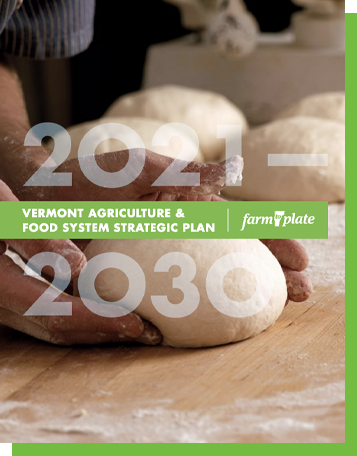
Over the past ten years since the release of the first Farm to Plate Strategic Plan, Vermont’s food system economic output expanded 48%, from $7.5 billion to $11.3 billion, which includes $3 billion (26.5%) from food manufacturing—Vermont’s second-largest manufacturing industry. The food system added 6,560 net new jobs (11.3% increase), and more than 64,000 Vermonters were directly employed by over 11,500 farms and food-related businesses. Local food purchases rose from $114 million (5%) to $310 million (13.9%) of the total $2.2 billion spent on food in the state annually, and Vermont farms sold $781 million worth of product per year.
Recognizing the success of the first Plan and the continued importance of agriculture and food to Vermont’s economy, environment, and culture, the Vermont Legislature and Governor Scott reauthorized the Farm to Plate Investment Program in 2019, and in doing so set in motion the development of Vermont's second 10-year strategic food system plan - the Vermont Agriculture & Food System Strategic Plan 2021-2030 which was published February 8, 2021 and was delivered to the Vermont State Legislature on February 11, 2021.
The 2021-2030 Plan contains a vision for Vermont's food system in 2030, 15 strategic goals with 87 objectives, and 34 priority strategies (recommendations for action). It is based on a series of 54 food system product, market, and issue briefs highlighting current conditions, bottlenecks and gaps, opportunities, and recommendations.
The contents of the Plan were shaped by farmers, food entrepreneurs and workers, government personnel and elected officials, nonprofit organizations, technical and business assistance providers, educators, researchers, capital providers, and Vermont food consumers. Over 1,500 people, from all of these groups, contributed to the development of this plan over an 18-month period.
